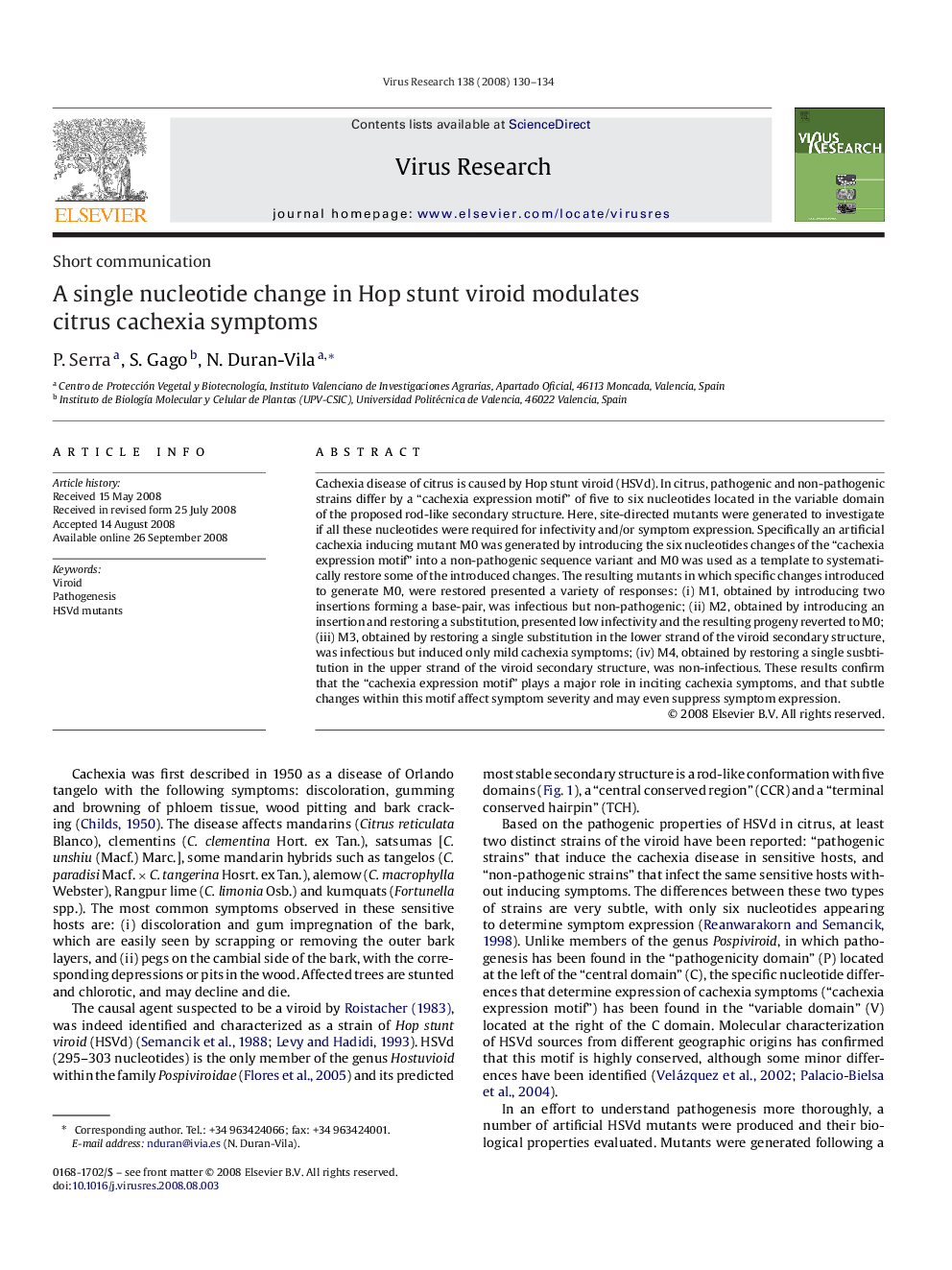| Article ID | Journal | Published Year | Pages | File Type |
|---|---|---|---|---|
| 3430422 | Virus Research | 2008 | 5 Pages |
Cachexia disease of citrus is caused by Hop stunt viroid (HSVd). In citrus, pathogenic and non-pathogenic strains differ by a “cachexia expression motif” of five to six nucleotides located in the variable domain of the proposed rod-like secondary structure. Here, site-directed mutants were generated to investigate if all these nucleotides were required for infectivity and/or symptom expression. Specifically an artificial cachexia inducing mutant M0 was generated by introducing the six nucleotides changes of the “cachexia expression motif” into a non-pathogenic sequence variant and M0 was used as a template to systematically restore some of the introduced changes. The resulting mutants in which specific changes introduced to generate M0, were restored presented a variety of responses: (i) M1, obtained by introducing two insertions forming a base-pair, was infectious but non-pathogenic; (ii) M2, obtained by introducing an insertion and restoring a substitution, presented low infectivity and the resulting progeny reverted to M0; (iii) M3, obtained by restoring a single substitution in the lower strand of the viroid secondary structure, was infectious but induced only mild cachexia symptoms; (iv) M4, obtained by restoring a single susbtitution in the upper strand of the viroid secondary structure, was non-infectious. These results confirm that the “cachexia expression motif” plays a major role in inciting cachexia symptoms, and that subtle changes within this motif affect symptom severity and may even suppress symptom expression.
